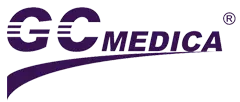-
Laparoscopic & Endoscopic Products
-
Laparoscopic Procedures
- Heated Insufflation Tube
- Laparoscopic Smoke Filter
- High FLow CO2 Laparoscopic Insufflation Filter Tube Set
- Veress Needle
- High Flow Heated Insufflation Tube
- Arthroscopy Irrigation Set
- Disposable Bladeless / Bladed Trocar with Thread / Balloon
- Disposable Wound Protector
- Disposable Height Changeable Wound Protector
- Retrieval Bag
- Laparoscopic Suction Irrigation Set
- Laparoscopic Insufflator
- Endoscopy Care and Accessories
-
Laparoscopic Procedures
- Respiratory & Anesthesia
- Cardiothoracic Surgery
- Gynaecology
-
Urology
- CathVantage™ Portable Hydrophilic Intermittent Catheter
-
Cysto/Bladder Irrigation Set
- M-easy Bladder Irrigation Set
- B-cylind Bladder Irrigation Set
- S-tur Bladder Irrigation Set
- S-uni Bladder Irrigation Set
- B-uro Bladder Irrigation Set
- Premi Bladder Irrigation Set
- J-pump Bladder Irrigation Set
- J-tur Bladder Irrigation Set
- H-pump Bladder Irrigation Set
- Sup-flow Bladder Irrigation Set
- Maple Irrigation Set
- Peony Irrigation Set
- Nelaton Catheter
- Urinary Drainage Bag
- Urinary Drainage Leg Bag
- Enema Kits
- Sitz Bath Kits
- Click Seal Specimen Container
- Silicone Male Catheter
- Spigot Catheter and Adaptor
- Sandalwood Irrigation Set
- Freesia Irrigation Set
- Daffodil Irrigation Set
- Single-Use Digital Flexible Ureteroscope
- Enteral Feeding Products
- Dental
- Fluid Management
- Warming Unit and Warming Blanket
-
Operating Room Necessities
- Nasal and Oral Sucker
- Disposable Medical Equipment Covers
- Magnetic Drape / Magnetic Instrument Mat
- Suction Handle
-
General Surgery
- Perfusion Atomizer System
- Gastric Sump Tube
- Surgical Hand Immobilizer / Lead Hand for Surgery
- Administration Set for Blood
- Ear/Ulcer Syringe
- Bulb Irrigation Syringe
- Toomey Irrigation Syringe
- Mixing Cannula
- Basin Liner/Basin Drape
- Medical Brush
- Sponge Stick
- Suture Retriever
- Needle Counter
- Disposable Calibration Tube
- Heparin Cap
- 100ML Bulb Irrigation Syringe
- Scleral Marker
- Surgical Light Handle
- Mucosal Atomization Device
- Durable Medical Equipment
- Patient Handling System
- PVC-FREE Medical Device
- Emergency
-
Patient Air Transfer Mattress Online WholesaleDec 17 , 2024
-
Cystoscopy Irrigation Set Online Wholesale | GCMEDICADec 17 , 2024
-
Patient Warming Device and Blanket Online wholesaleDec 16 , 2024
-
CathVantage™ Twist Intermittent Catheter | GCMEDICASep 20 , 2024
-
Single-Use Digital Flexible Ureteroscope | GCMEDICASep 20 , 2024
What Safety Precautions Do You Need to Know About Endotracheal Tubes?
There are often respiratory, circulatory, and other problems after general anesthesia tube removal, which can be life-threatening in severe cases. Data has shown that the incidence of serious breathing abnormalities during or after tube removal is 4%-9%, and about 0.19% of cases require re-intubation. If the tube removal is "ideal" after surgery, the patient should have satisfactory ventilation, normal respiratory freedom, complete airway protective reflex, and normal lung function. However, in clinical practice, a small number of patients are unable to completely meet these conditions before tube removal, leading to various respiratory and circulatory function abnormalities.
Preparation before endotracheal tube removal
At the end of the surgery, anesthesia has generally stopped, and the patient has entered the recovery stage. If vital signs are stable, autonomous breathing has recovered satisfactorily, tidal volume is sufficient to meet the needs of the body, and consciousness is gradually clear, then tube removal preparation can begin.
Before endotracheal tube removal, the oral and tracheal secretions should be aspirated from the patient. When aspirating the trachea, a finer and more elastic aspirating tube should be used, and its diameter should not exceed half of the tracheal inner diameter. The suction time should not exceed 30 seconds at a time, to avoid lung atelectasis and suction hypoxia. Repeat this intermittently a few times until the site is clear. Positive pressure ventilation may be required before tube removal, especially for thoracic surgery, to allow the lungs to be adequately inflated.
Timing of endotracheal tube removal
The indicators for tube removal should be based on the patient's postoperative condition and the anesthesiologist's own experience. Generally, when the patient's blood pressure, heart rate, and breathing are stable, especially when breathing is adequate, consciousness is basically clear, and all reflexes have basically recovered to normal, and if muscle relaxants have been used, their effects should have completely disappeared. Non-depolarizing muscle relaxants should be appropriately reversed after their actions have disappeared, and then tube removal can be considered.
Issues to pay attention to during and after endotracheal tube removal
Before removing the endotracheal tube, a mask, laryngoscope, and endotracheal tube should be prepared in case re-intubation is necessary due to any unusual occurrences after tube removal.
Pure oxygen ventilation should be continued for 3-5 minutes or synchronous hand-controlled breathing bag-assisted breathing before removal, to ensure sufficient oxygen reserves.
The gas in the endotracheal tube cuff should be extracted to avoid missing the release of gas, which may cause compression on the vocal cords (the tension in the vocal cords has been restored after the anesthesia has ended), resulting in hoarseness, vocal cord paralysis, or epiglottic cartilage dislocation. The tracheal tube should be removed with its curvature to reduce stimulation to the glottis.
After tube removal, observe the patient's respiratory freedom and any abnormalities that may have occurred before removal. If there is a posterior tongue displacement or tracheal secretions, adjustment and suction should be provided to keep the upper respiratory tract unobstructed.
In the event of difficult breathing after endotracheal tube removal, the pharynx should be observed directly through a laryngoscope, and systemic treatments should be given accordingly.
For patients with difficult airways or for whom intubation before surgery was challenging, various rescue equipment should be prepared in advance, and re-intubation or other appropriate measures should be taken when necessary.

